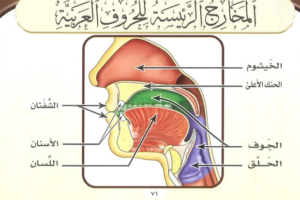
Islam And The World – Part 3
If you haven’t read part 1 and part 2, here you can read them first:
Islam And The World – Part 1
Islam And The World – Part 2
Buddhism
Due to its assimilation of the teachings of Brahmanism and its adoption of deities and gods, Buddhism had, a long time ago, lost its individuality and the simplicity of its creed. Brahmanism had swallowed it up. In any case, the two religions had melted into each other after centuries of bitterness and conflict, and Buddhism was converted into an idolatrous faith. Wherever the Buddhists went, they took the images of Buddha with them. The entire religious and cultural life of the Buddhists is overshadowed by idolatry. Strangely enough, idol worship was introduced into Buddhism when it was in the full bloom of its power in India. Professor Ishwar Topa observes that “the kingdom that was established under the patronage of Buddhism began to present a vast scene of idolatry. The atmosphere in the monasteries was changing and heretic innovations were being introduced one after another.”
“Brahmanism,” says Pandit Jawaharlal Nehru in his book The Discovery of India, “made of Buddha an ‘avatar’, a god. So did Buddhism. The Mahayana doctrine spread rapidly, but it lost in quality and distinctiveness what it gained in extent. The monasteries became rich centers of vested interests and their discipline became lax. Magic and superstition crept into popular forms of worship. There was a progressive degeneration of Buddhism in India after the first millennium of its existence.” Mrs. Rhys Davids thus describes its diseased state during that period: “Under the overpowering influence of these sickly imaginations, the moral teachings of Gautama had been almost hidden from view.
The theories grew and flourished, each new step, each new hypothesis demanded another; until the whole sky was filled with forgeries of the brain, and the nobler and simpler lessons of the founder of the religion were smothered beneath the glittering mass of metaphysical subtleties.”.
Such being the state of affairs, the Buddhists in India, China, and other countries of Southeast Asia could scarcely be looked on to play a significant role in the moral and spiritual rehabilitation of man, or the promotion of peace and stability in the world. The Chinese, in particular, were leading a self-sufficient life at the eastern end of the civilized world with their spiritual and cultural patrimony securely entombed in their breasts.
Central Asia
The other nations of Eastern and Central Asia (Mughals, Tartars, Japanese, etc.) were oscillating between perverted Buddhism and barbaric paganism. They were still in the transition stage of civilization, having only just begun to emerge from the Dark Ages. Most had yet to learn the rudiments of civilized existence.
India
In India, the epoch opening with the sixth century was by all accounts the gloomiest in its long and chequered history. Once the cradle of great religions and mighty civilizations, it had now languished and absorbed all the features of social and moral degeneration that had overtaken the neighboring lands, and to these, it had added a few characteristics of its own, more prominent among which were: an abundance of objects of worship; sexual wantonness; and caste and social distinctions.
-
Ever-Increasing Gods
In the sixth century, idolatry reached its lowest ebb in India. During this period as many as 330 million gods were worshipped among Hindus. Almost everything that possessed any attractiveness or utility had been vested with divine attributes. Stones and minerals, trees and plants, rivers and mountains, animals, and even organs of procreation were adored as gods.
Thus, this ancient religion was turned into a heap of mythical traditions, beliefs, and rites. Dr. Gustave le Bon says in Les Civilisations de l’Inde: “The Hindu, of all people, stands most unavoidably in the need of visible objects for religious worship, and although at different times religious reformers have tried to prove monotheism in the Hindu faith, it has been an unavailing effort.
-
Sexual Wantonness
Nowhere do obscene subjects and sexual themes occupy such a conspicuous place in religion as they did in Ancient India. Extremely revolting and shameless accounts of the sexual misdeeds of gods and goddesses by way of explaining the occurrence of important mythological events and the creation of things are found in ancient Indian religious books.
It requires no great imagination to picture what indecent practices must have gone on in the name of religion. The worship of the “lingam” (the sexual organ) of Siva was prevalent throughout the land.
(Dr Gustave le Bon in Les Civilisations de l’Inde)
-
The Caste System
The real credit, however, for evolving the caste system into a rigid social framework and law goes to Manu who, in the heyday of Brahmanic civilization in India, three hundred years before the birth of Christ, formulated what is commonly known as the “Manu Shastra”, the sacred law of Hindu society. Manu classified the entire Hindu population into four classes regarding their birth, namely:
-
- The Brahmans or the learned and priestly class
- The Kshatriyas or the fighting and ruling class
- The Vaisyas or the trading and agricultural people
- The Sudras or the lowest caste people whose sole purpose in life was to serve their superiors.
- The “Manu Shastra” says: “The Lord created Brahman from His mouth, Kshatriya from His arms, Vaisya from His thighs and Sudra from His feet so that the world may prosper.”
-
-
The Position of Women in Indian Society
In the Law of Manu, according to Gustave le Bon, the woman was consistently shown as frail and referred to in disgraceful terms. On the death of their husbands, women were condemned to a state of perpetual misery. They were not allowed to remarry. They lived as slave maids of the brothers of their husbands, or their other descendants.
References:
English Islam and the World
https://www.muslim-library.com/dl/books/English-Islam-And-The-World.pdf
By: SAYYED ABUL HASAN ‘ALI NADWI
Translated by: Dr. Muhammad Asif Kidwai


